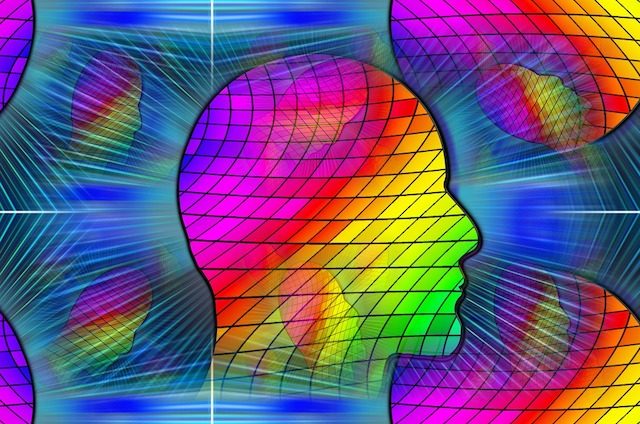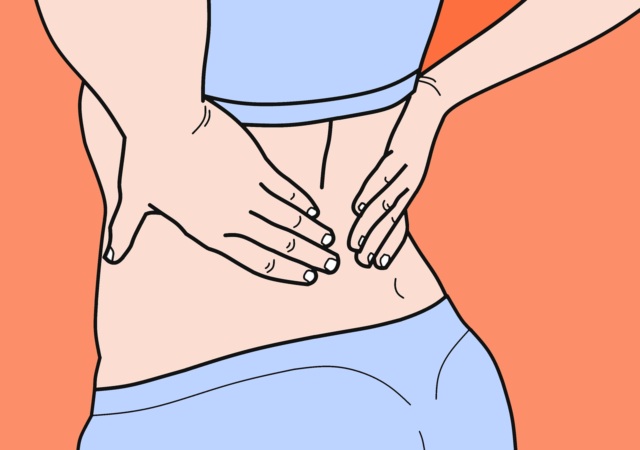Your brain is almost always there when you need it, except when you find yourself chemically altered, extremely tired, or way too in love with the hot person you’re trying to impress. And while this miracle of biology can do some incredible things, the fact is that your brain is only human. If you try hard enough, you can play tricks on it, which is doubly impressive since it helps you do tricks in the first place. Let’s check out ten of the most impressive ones.
10. The hanger reflex can cause your head to turn involuntarily.

Internet trends, memes, and viral videos come and go. Yesterday's Ice Bucket Challenge is tomorrow's Yanny/Laurel. And in May 2023, the coolest thing to happen for two weeks was Hanger Challenge .
The premise was as simple as it was incredible. Put a wire hanger on your head, and it will make your head turn whether you want it to or not. No one believed it was real, so everyone had to try it themselves and then post videos of their results. And so a viral trend was born, as the number of videos skyrocketed, fueled by widespread disbelief that the bizarre effect could even be genuine. But it was! If you stretch the hanger around your head just right, it will actually make your head turn involuntarily. For most people, anyway.
Although this phenomenon became a trend in 2022, this phenomenon was recognized much earlier and was even written about in scientific articles back in 2015. It was even shown on Japanese television back in 1995 . There were hangers and heads. He just never got this much press before.
When one side of your frontotemporal region is compressed, the movements are involuntary, but the exact reason why this happens is not entirely clear. However, more than 95% of people in the study felt sensitivity, while only 4,2% seemed unresponsive.
9. Sunglasses can trick you and make you happier

Do people wearing sunglasses seem happier than other people? It's very possible that they might be, and it's not just because they look so cool. Sunglasses trick your brain into thinking you're happier.
The power of sunglasses is tied to how human emotions work. You may have heard some people say that they wear their heart on their sleeve, and perhaps you yourself are not so good at hiding your emotions. The way we look and act can affect how we feel, and a simple frown can make you feel sad or even angry and aggressive. And to be clear, you don’t necessarily have to frown because you are sad or angry. The bright sun in your eyes will make you squint and frown, and this gesture is enough to actually cause negative emotions. emotions , associated with a frowning look.
Study participants who wore sunglasses reported that they were generally less angry and aggressive than those who didn't wear them. This seems consistent with other studies that suggest that the simple act of smiling releases stress relieving chemicals . So if you're feeling a little overwhelmed on a sunny day, try putting on some sunglasses and tricking your brain into thinking you're happy.
8. Placebo sleep can make you feel rested

The Centers for Disease Control and Prevention says every third Adults don't get enough sleep. For that reason alone, finding a way to get more rest seems like a good idea. So what if you could just trick your brain into thinking you're sleeping, even when you're not? It turns out that's an option, and it works.
Placebo sleep works like most other placebos, where your mind creates the illusion that something happened, even if it didn't. With the right stimuli, you can feel confident that you've had a good rest, even if you haven't.
The researchers took two groups of people and explained the importance of REM sleep and then did a sleep study. They were told that a good amount of REM sleep is between 20% and 25%. After the sleep study, one group was told that they would do a 28.7% of its time in REM sleep. Another group was told they had only 16.2% REM. These were not the correct numbers.
Those who were told they had slept better performed better on cognitive tests after the fact. Those who were told they had slept worse performed worse than control groups. How either of them actually felt didn't matter.
7. Rubber Hand Illusion
You would hope that, among other things, your brain would at least be able to figure out where your body parts are and how they feel. Unfortunately, you can even trick it into not being able to do this, using something called rubber hand illusion .
The trick here is as simple as it is complex, and can be done at home if you wish. You will need some kind of fake hand; something as simple as an inflated rubber glove will do. Place your right forearm on the table, with your hand hidden from view in a box or behind cardboard. Place your hand in front of you at shoulder level. You can use a towel to cover it below the wrist to help complete the illusion. Your other hand can be under the table.
Have someone sit across from you and use two paint brushes to simultaneously stroke your hidden hand and rubber hand . Focus on the fake hand. If the stimulation is properly coordinated, most people begin to perceive the fake hand as their real hand. When rubber hand is threatened , such as with a knife or a needle, your brain actually reacts as if your real hand was about to be stabbed.
6. The nocebo effect can make you feel pain or nauseated.

We've already talked about placebo, so let's move on to nocebo effect . In fact, it can make you feel pain and discomfort for literally no reason at all, simply by tricking your brain. It's essentially believing that something bad is going to happen, and then it happens just because you think it will.
An example of how this might work is similar to the placebo effect, and it's actually half of what happened in the placebo sleep example. If you take a useless pill and the doctor tells you it will make you feel great, and it does, that's a placebo. But if the doctor says it has terrible side effects, and you I start to feel sick , it's the nocebo effect. It's your brain making up symptoms based on what it's been told is happening, even if it's not true.
5. The illusion of a stopped clock

Have you ever felt like there aren't enough hours in the day? Well, you're in luck, because there is a way to stop time. Or at least trick your brain into thinking for a moment that you have.
Rapid eye movements can cause a visual distortion known as saccade suppression, which is what prevents you from noticing your own eye movement when you look in a mirror. At the same time, they also create an illusion called chronostasis Also called the stopped clock illusion, this is what happens when you quickly glance at an analog clock on the wall and the second hand appears to have stopped moving. move . This is caused by rapid eye movements that leave gaps in visual information. For example, if you look very quickly from your computer to your watch, you're not really focusing on anything else. To avoid a blur or a dark spot, your brain sort of holds on to that moment, just for a moment, and makes it seem like the world has stopped, even if only briefly, to ensure a smooth transition.
4. Skin rabbit

If you've never had a rabbit run across your hand, now's your chance to experience the illusion without having to track down a real rabbit. rabbit can trick your brain into thinking you're being attacked by rabbits.
The method is simple. The subject extends his arm and is subjected to five quick light taps on the wrist. Then five more in the middle of the forearm. Then five more near the elbow. The subject will feel them as a series of taps from the wrist to the elbow, simulating the sensation of a tiny rabbit making 15 hops up the arm. You can see examples of this in Video on YouTube with mixed results.
3. Viewing a black and white image in full color mode

Another popular technique that has gained fame on TikTok, was to look for color where there was none. Specifically, you can trick your brain into perceiving a black and white image as full color if you focus on the center point and the image switches to a high-contrast negative color image.
When you focus on a point, color receptors your eyes begin to tire. Your cones perceive color using three cones sensitive to blue, red, and green wavelengths. As soon as the reverse color image changes back to black and white, your eyes will perceive colors that were not present in the contrast version. The illusion occurs quickly, but for a moment you should perceive the black and white photograph in full, true color.
2. Out of Body VR

Virtual reality can be used to make you have an out-of-body experience. It's a bit like the rubber hand illusion, only this time it's full body immersion. The virtual environment should give you a copy of itself, and then all it has to do is poke you with a stick.
As one neuroscientist explained, your sense of self and body is built on a foundation of many sensory data Vision is a big part of this, but what you can physically feel and how you feel your body is oriented also matters. When you trick the brain by showing it new information that doesn’t match up, it goes a little crazy. In experiments, researchers were able to get participants to look at virtual bodies they were touching and actually feel like they were in that other virtual body when the sensations matched what they were also feeling. At one point, when a virtual body was smashed with a hammer, participants registered a fear response, including increased sweating and heart rate, as if they were experiencing the attack themselves.
In another experiment, participants were asked to enter a virtual body and wear it as if it were their own. Then their perspective was changed so that instead of being in the body, they were looking at it. After this, all the participants who left the body and looked at it reported a significant reduction in fear. death In this case, the researchers suspected that the out-of-body experience allowed the participants to separate their body from their consciousness and, in doing so, lose some of the traditional fear of death.
1. Distorted body image can reduce pain

We know that pain has a strong psychological component, but just how strong it is can be surprising. Things like phantom limb syndrome or alien hand syndrome, show that your brain's perception of what your body is really like can be very different from reality, but still convince you that it is true. A distorted body image can actually affect how your mind perceives pain, even in chronic conditions, and it can be manipulated in some unusual ways.
In one study, patients with chronic arm pain were asked to look at their sore arm, perform a few movements, and then rate the pain they felt afterward. They did this four times under different conditions. One was normal, and three others used binoculars. They looked at their arm without magnification, with magnification, and then through binoculars that were inverted so their arms looked tiny. Nothing else was different.
Participants reported feeling more pain when their hand was enlarged. But when they looked through backward-facing binoculars at the tiny hand, they felt less pain What was even more interesting was that it wasn't all in their heads. The researchers measured inflammation after the experiment, and the swelling has decreased after the hand looked tiny. So it wasn't just a perception, it was an actual physical effect on the pain.














Оставить Комментарий